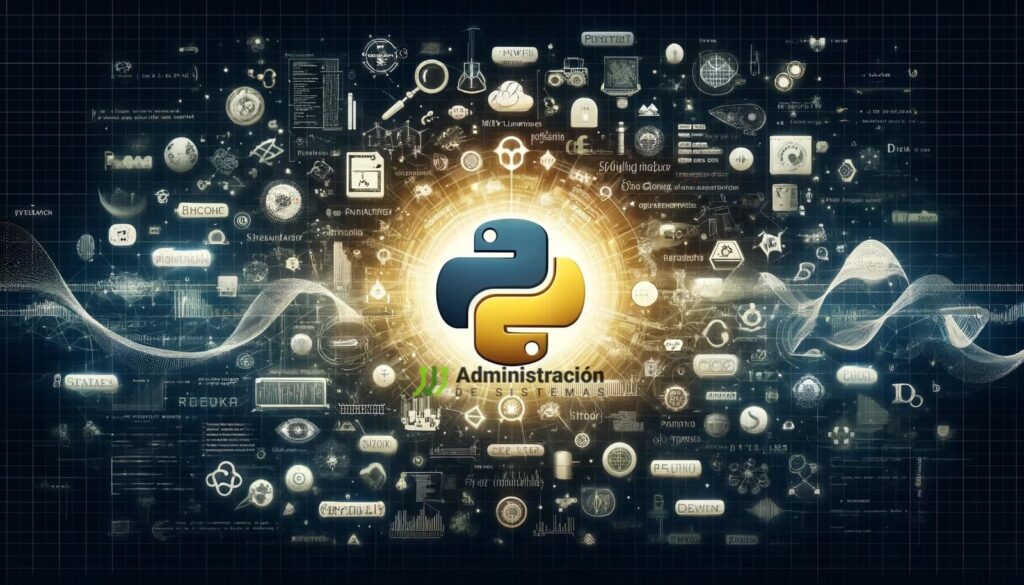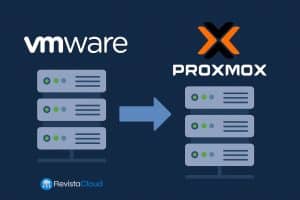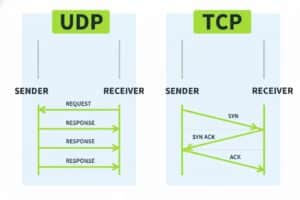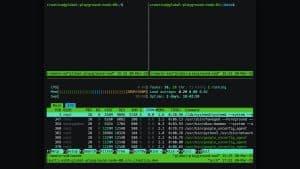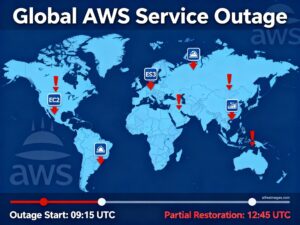When Heroku ended its free plan for Dynos, Postgres, and Data for Redis (Nov 28, 2022), many teams had to move apps and data in a hurry. Two years on, the landscape is clear: there are free (or “always-free”) options beyond Heroku, but there is no 1:1 drop-in. For a sysadmin audience, this guide isn’t a list; it’s an operational plan—which target model to pick, how to migrate with minimal downtime, and how to run with proper observability, security, and predictable costs.
Executive summary
- Target models: PaaS/containers, Serverless, Jamstack, managed DBs/caches, and self-hosted PaaS.
- Migration: inventory → Procfile/Dockerfile → add-ons → data → CI/CD → networking & security → observability → runbooks.
- Risks: sleep policies, blocked SMTP, egress limits, vendor lock-in, missing backups on free tiers.
1) Destination models: ops-focused pros & cons
A) PaaS / Managed containers
Render, Koyeb, Northflank, Qoddi, Alwaysdata, Back4App, Netlify/Vercel (with functions).
Pros: git deploy, buildpacks or Docker, simple autoscaling, Postgres/Redis add-ons.
Cons: sleep on free tiers, SMTP restricted, CPU/RAM caps, unspecified egress.
When: web/REST apps, workers and cron jobs where cost/ops matter more than ultra-low latency.
B) Serverless
Cloud Run, AWS Lambda, Azure Container Apps, Cloudflare Workers/Pages Functions.
Pros: scale-to-zero, pay-per-use, global edge (Workers).
Cons: cold start, per-minute quotas/limits, stateless by design, harder end-to-end tracing.
When: stateless APIs, event-driven tasks, microservices.
C) Jamstack & static
Netlify, Vercel, Cloudflare Pages, GitHub Pages, Surge.
Pros: global CDN, preview deploys, tiny cost.
Cons: separate backend (functions or external APIs), build-minutes limits.
D) Managed databases (Heroku Postgres/Redis replacements)
CockroachDB Serverless, Neon (Postgres), Supabase (Postgres), PlanetScale (MySQL), TiDB Cloud, Turso (edge SQLite), Upstash (Redis/Kafka), Redis Enterprise (starter), MongoDB Atlas M0.
Pros: PITR, branching, autosuspend, edge regions.
Cons: small storage, limited SLAs, region restrictions on free.
E) Self-hosted PaaS
Dokku, CapRover, Coolify, Tsuru, Piku.
Pros: full control, git-push deploy, no sleep, no vendor lock-in.
Cons: not free to run (VPS/IaaS bill), you own patching, backups, TLS, monitoring.
2) Quick decision tree (ops-first)
- Is the app stateless and OK with cold start? → Serverless (Cloud Run/Lambda/Workers).
- Needs WebSocket or always-on processes? → PaaS/containers (Render/Koyeb/Northflank) or self-hosted (Dokku/CapRover).
- Burst-y traffic + cost sensitivity? → Serverless or PaaS with scale-to-zero.
- Need data residency/GDPR + PITR? → Neon/Supabase/PlanetScale/CockroachDB per stack.
- Want portability and minimal lock-in? → Docker + self-hosted PaaS.
3) Migration plan (30-60-90 days)
0) Inventory (week 1)
- Repos, Procfile, buildpacks, env vars, add-ons (Postgres/Redis/SMTP), domains, SSL, schedulers.
- External deps (payments, webhooks, S3, OAuth).
- SLOs: latency, uptime, acceptable downtime window.
1) Runtime (weeks 2–3)
- Convert Procfile → Dockerfile if leaving buildpacks.
FROM node:20-alpine WORKDIR /app COPY package*.json . RUN npm ci --only=production COPY . . EXPOSE 3000 CMD ["node","server.js"] - Split web/worker/cron into separate services/jobs.
- Move secrets from “Config Vars” to a Secret Manager (or PaaS-encrypted env).
2) Data (weeks 3–5)
- Postgres: prefer logical replication; otherwise pg_dump/pg_restore + read-only window.
pg_dump -Fc "$HEROKU_DATABASE_URL" -f dump.pg pg_restore --no-owner --no-privileges -d "$NEW_DB_URL" dump.pg - Redis: export/import if supported; else rehydrate from the real DB (avoid treating Redis as primary storage).
- Validate encodings, extensions, collations.
3) Networking & domains (weeks 4–6)
- TLS/ACME managed by provider, or cert-manager (self-hosted).
- Fixed egress IP if upstream requires allowlisting → NAT Gateway or provider feature.
- WAF/CDN: Cloudflare/Fastly for bots, DDoS, rate limits.
- SMTP: most free tiers block it; use SendGrid/Postmark/Mailgun (free/hobby plans).
4) Observability (weeks 5–7)
- Structured logs (JSON) + correlation-id.
- Centralize with ELK / Loki+Promtail / OpenSearch or managed add-ons.
- Tracing: OpenTelemetry → Tempo/Jaeger/X-Ray/Cloud Trace.
- Metrics: Prometheus + Grafana, alerts in PagerDuty/Opsgenie.
5) CI/CD (weeks 6–8)
- Pipelines via GitHub Actions/GitLab CI: lint → tests → build image → deploy.
- Preview deploys if provider supports them.
- Canary/Blue-Green where feasible.
6) Security & compliance (weeks 7–9)
- SSO/SCIM, RBAC, rotate API keys and tokens.
- Backups daily with verified restore tests (monthly).
- Data residency, DPA/GDPR review per provider.
7) Runbooks & rollback (week 9)
- Written procedures: scaling, incident, DB restore, secret rollover.
- Rollback plan to Heroku or previous release.
4) Cookbook by destination (commands & gotchas)
Render / Koyeb / Northflank (managed containers)
- Build via Docker or buildpacks.
- Define web, worker, cron as separate services.
- Attach Postgres/Redis (managed) or external (Neon/Upstash).
- Gotchas: sleep on free, limited egress, SMTP blocked.
Cloud Run (GCP) / Lambda (AWS) / Workers (Cloudflare)
- Minimal container/function.
- Cloud Run: great middle ground—HTTP, concurrency, min instances to reduce cold start.
- Workers: ultra-low latency, KV/Queues/D1; CPU/duration limits.
- Gotchas: cold starts, external state, RDS Proxy or Neon for Postgres.
Dokku / CapRover / Coolify (self-hosted)
- VPS (2–4 vCPU, 4–8 GB RAM) + swap + NVMe disk.
- Install platform, enable ACME/Let’s Encrypt, backups, monitoring.
- git-push deploy (Dokku/Piku) or one-click apps (CapRover/Coolify).
- Gotchas: host patching, firewalling, fail2ban, manual DB PITR.
5) Common add-on replacements
- Heroku Postgres → Neon / Supabase / CockroachDB Serverless (PG), PlanetScale (MySQL), TiDB Cloud.
- Heroku Redis → Upstash / Redis Enterprise (starter).
- Heroku Scheduler → PaaS cron/job, or Cloud Scheduler (GCP) / EventBridge (AWS) / Workers Cron (CF).
- Heroku Logplex → Loki/ELK/OpenSearch (managed or self-hosted).
- Heroku Mail → SendGrid/Postmark/Mailgun (free/hobby tiers).
6) Day-2 operations (the things that bite)
- Sleep/autosuspend: schedule health pings if allowed, or upgrade to a non-sleep tier.
- Verified backups: never assume on free tiers. Restore to a sandbox monthly.
- Secret rotation: quarterly cadence + audit logs.
- Cost control: monthly usage dashboard, alerts on egress, build minutes, invocations.
- Security: lock SSH, prefer OIDC/SSO, IP allowlists, WAF/CDN, rate limiting.
- Access lifecycle: clean on/off-boarding for PaaS, repos, and secret stores.
7) Migration checklist (printable)
- Inventory apps/add-ons/domains/SLAs.
- Dockerfile(s) and health checks.
- Target DB selected + dump/replication plan + PITR.
- Secrets stored in a dedicated manager.
- TLS and DNS cutover with low TTLs.
- Logs, metrics, tracing, and alerts wired.
- CI/CD with preview and rollback.
- Automated backups + restore tests.
- Runbooks for incident/restore/rotation.
- Validate sleep/SMTP/limits of the selected plan.
8) Sysadmin FAQs
How do I minimize Postgres downtime?
Prefer logical replication; otherwise dump/restore with a read-only window. For critical apps, consider a temporary dual-write + feature flag cutover.
Can I get a fixed egress IP on free plans?
Rarely. Use a NAT Gateway (your own cloud), a provider offering fixed egress, or Cloudflare Tunnel depending on the use case.
What replaces Heroku’s review apps?
Preview deployments (Vercel/Netlify/Render/Koyeb) or ephemeral CI environments (spin up container + DB branch in Neon/PlanetScale).
What about cron and workers?
Run them as separate services (PaaS) or use Cloud Scheduler / EventBridge / Workers Cron (serverless). Avoid cron inside the web container.
How do I keep serverless costs in check?
Set quotas, timeouts, minimal concurrency, caching, and egress alerts. Review billing weekly in month 1.
Provider quick reference
- PaaS/containers: render.com, koyeb.com, northflank.com, qoddi.com, alwaysdata.com, back4app.com
- Serverless & edge: cloud.run, aws lambda, azure container apps, workers.cloudflare.com, pages.cloudflare.com
- DBs: cockroachlabs.cloud, supabase.com, neon.tech, planetscale.com, tidbcloud.com, turso.tech
- Redis/Kafka: upstash.com, redis.com/try-free
- Static/Jamstack: vercel.com, netlify.com, pages.github.com, surge.sh
- Self-hosted PaaS: dokku.com, caprover.com, coolify.io, tsuru.io, piku.github.io
Bottom line. Replacing Heroku on a free/hobby budget is feasible if you accept a different operating model: more sleeping, more limits, and more responsibility for visibility and security. For production, consider entry-level paid tiers (no sleep) or a self-hosted platform with solid practices (Docker, backups, monitoring). The “good migration” isn’t the one that copies commands; it’s the one that leaves Operations with visibility, runbooks, and predictable costs.

